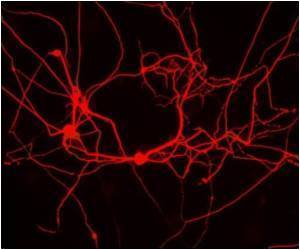Short pulses of ultrasound waves have been used by scientists to reach neurons through blood-brain barrier

"This is a great step forward," says Konofagou. "Devastating diseases such as Alzheimer's and Parkinson's that affect millions of people are currently severely undertreated. We hope our new research will open new avenues in helping eradicate them."
Highly specific delivery of drugs to human organs is essential for the effective treatment of many diseases. But the brain presents a difficult problem: it has a unique vascular system—the blood-brain barrier—that acts as a closed door to prevent the entry of foreign molecules. While it protects the brain from potentially toxic substances, it also prevents the delivery of therapeutic drugs to the brain. Because many molecules cannot cross the BBB, available treatments for patients with neurological disorders have been severely limited. Konofagou and her team are focused on getting the door opened enough to safely reach those cells that need to be treated.
Konofagou and her team have designed a focused ultrasound method that can target only the area of the hippocampus that is affected in early Alzheimer's. In this study, they administered microbubbles to enhance the intended mechanical effect, and a high-field MRI to detect and map the area of BBB opening as well as quantify the permeability of the opened BBB. They also used fluorescence confocal microscopy to visualize the molecular diffusion and neuronal enhancement in 3-D to identify both highlighted neurons and their network.
More testing is planned with therapeutic drug treatments. Konofagou's team has shown that therapeutic molecules trigger downstream effects after diffusion through the blood-brain barrier, starting with the cell membrane and all the way through the nucleus. They also are unveiling the mechanism of the opening that involves stable oscillation or collapse of the bubble, with the former being the preferred mechanism as it is? completely controlled by the pressure and microbubble size. The blood-brain barrier has been shown to recover within the range of three hours to three days depending on the aforementioned parameters used. Konofagou's group has also recently reported that transcranial human targeting of the hippocampus, caudate, and putamen in the human brain is feasible in both simulations and in vitro experiments, thus paving the way towards clinical applications.
Source-Eurekalert









